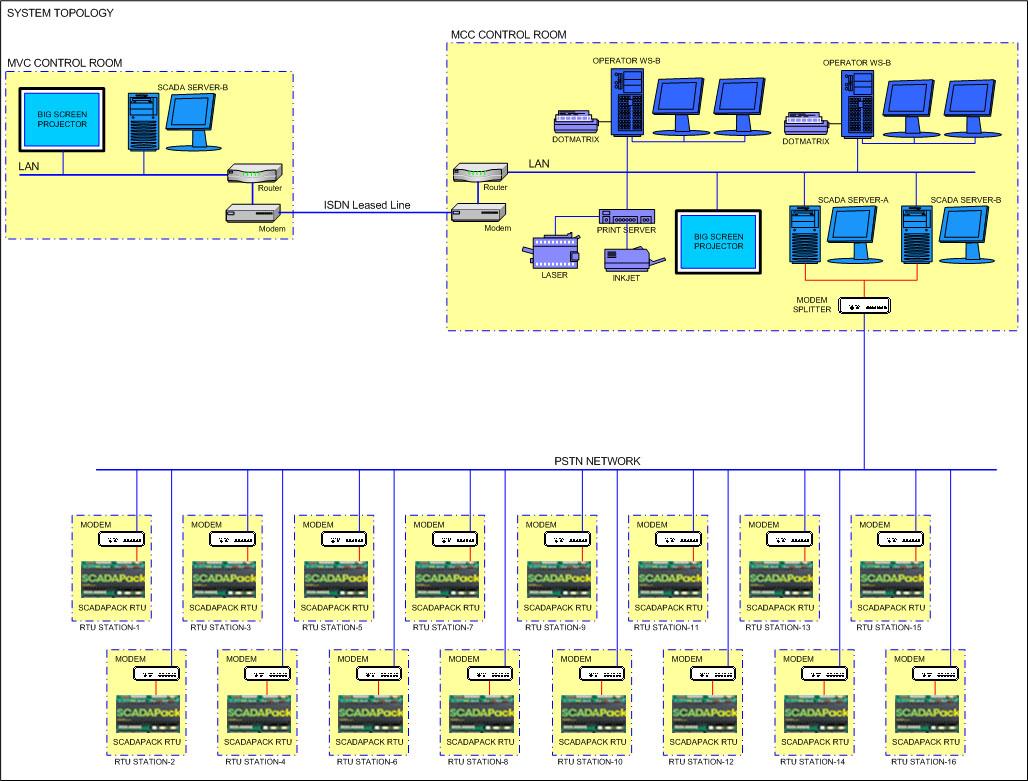
Beijing Airport Natural Gas Pipeline SCADA System
On November 27, 2000, TRC was awarded a turnkey
SCADA project for the Beijing International Airport Gas Distribution and Control
System. The natural gas pipeline supplies gas to the entire airport facility, in
addition to the associated residential area for all airport staff. The gas has two
sources, Huabei gas/oil field and Shan Ganning gas field.
The system was designed to replace the old manual system with a new automatic monitoring
and control system. The design was implemented jointly by Beijing Gas Department
and TRC, in association with TRC’s local branch in China; Boyang Technologies Inc.
Boyang staff was also utilized to install all end devices and perform loop testing.
The SCADA system consists of three different parts, MCC (Major Control Center),
MVC (Major View Center) and the Field. The MCC is the center of operation; it gathers
the real time data via PSTN, shows the data on the operation screen, and logs the
data onto the Industrial SQL Server. The MVC is principally used by the management
department located 2 miles away from the MCC; it has two view only workstations
and is interfaced with the Management Department MIS system. The Field includes
3 major distribution stations and 14 remote metering stations; all configured with
RTUs These RTUs receive data from the pipeline and forward it to the MCC. The MCC
is configured with a redundant real time server and a single Industrial SQL Server.
The real time servers utilize the Wonderware INTOUCH graphical user interface for
monitoring, remote control, alarming, trending and other SCADA functions. The 2
real time servers have synchronization of system time, database, alarms, etc, i.e.
a true hot backup redundant system. The switch over time upon server failure is
5 seconds. Wonderware’s Industrial SQL is used to log all the historical data, provide
real time trending, reporting, system events, and functions as a standard interface
with other systems, such as MIS.
The MVC workstations use INTOUCH view-only licenses. They are configured as a read
only system, utilizing remote reference to access real time data from the MCC. The
MVC application itself does not have a local database, the current data values monitored
on the screen are from the MCC real time servers, and the historical data is accessed
from the MCC Industrial SQL server. The communication between MVC and MCC is ISDN.
Control Microsystems SCADAPACK RTU's are utilized in the Field. The RTU's are installed
in each station’s local control room and communicate via PSTN to the MCC. Communications
between the Field and MCC utilizes the Industry Standard MODBUS Protocol, modified
by TRC for report-by-exception. TRC was responsible for the detailed system design,
procurement, system configuration and software development, system integration and
testing, installation supervision and start-up.